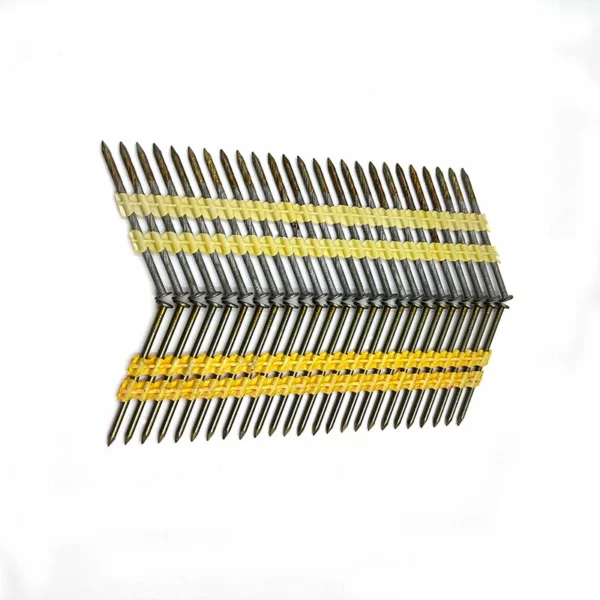How does the concrete nails for framing design differ from other nail types?
Concrete nails for framing differ from other nail types primarily in their design and intended use for fastening materials to concrete or masonry surfaces. Here are some key differences:
- Material Composition:
- Concrete nails for framing are usually made of hardened steel, which provides the strength needed to penetrate concrete or masonry surfaces effectively.
- Shank Design:
- Concrete framing nails have a unique design featuring grooves, flutes, or spiral threads along the shank. These designs help the nail achieve better grip and traction within the concrete or masonry, ensuring a secure attachment.
- Pointed Tip:
- The tips of concrete nails are typically pointed for easier penetration into concrete or masonry surfaces without the need for pre-drilling holes.
- Head Type:
- Some concrete framing nails have a larger, concrete nails for framing flat head or a washer-like head design. This broader head provides better load-bearing support and prevents the nail from sinking into the material once driven.
- Coatings:
- Many concrete nails are coated with materials like galvanized zinc or epoxy to improve corrosion resistance, especially when used in outdoor or moisture-prone environments.
- Application-Specific Use:
- Concrete framing nails are specifically designed for use in concrete or masonry applications, making them suitable for framing walls, attaching furring strips, or securing framing members to concrete foundations or walls.
- Installation Method:
- When using concrete nails for framing, they are typically driven into the surface using a hammer or a specialized nail gun designed for concrete nailing.
- Durability and Strength:
- These nails are engineered to withstand the hardness of concrete and masonry, providing the necessary strength and durability for secure fastening.
- Load-Bearing Capacity:
- Due to their design and materials, concrete nails for framing offer good load-bearing capacity, making them suitable for structural applications.
In essence, the design of concrete nails for framing emphasizes features that enable them to penetrate hard surfaces like concrete or masonry effectively, provide strong grip and traction, and ensure secure and durable fastening in these challenging materials.
Are there specific building codes or regulations that specify the use of concrete nails for framing in certain constructions?
Building codes and regulations often provide guidelines and specifications for fasteners used in construction, including those used for attaching framing elements to concrete or masonry surfaces. However, they might not explicitly mandate the use of “concrete nails for framing” as a specific requirement.
Instead, building codes and regulations typically outline criteria for the strength, durability, and corrosion resistance of fasteners used in structural applications. They may specify the types of fasteners or anchors suitable for securing framing elements to concrete or masonry, ensuring that they meet certain standards for safety and structural integrity.
For example:
- Material and Design Requirements: Building codes might specify that fasteners used in structural framing should be made of corrosion-resistant materials such as galvanized steel or stainless steel when in contact with concrete or masonry.
- Load Capacity and Performance: Codes often stipulate the load capacity and performance criteria for fasteners, ensuring they can withstand the intended loads and stresses without failure.
- Anchor Systems: Some codes might detail requirements for specific anchor systems or types of fasteners suitable for various applications, including framing elements in concrete or masonry construction.
- Installation Guidelines: Regulations might include guidelines for proper installation methods and depths for fasteners to ensure secure attachment and structural stability.
While building codes may not explicitly name “concrete nails for framing,” they typically focus on the performance, durability, and safety aspects of fasteners used in construction. Contractors and builders must adhere to these codes by selecting fasteners that meet or exceed the specified criteria for attaching framing elements to concrete or masonry surfaces, ensuring the structural integrity and safety of the building.
